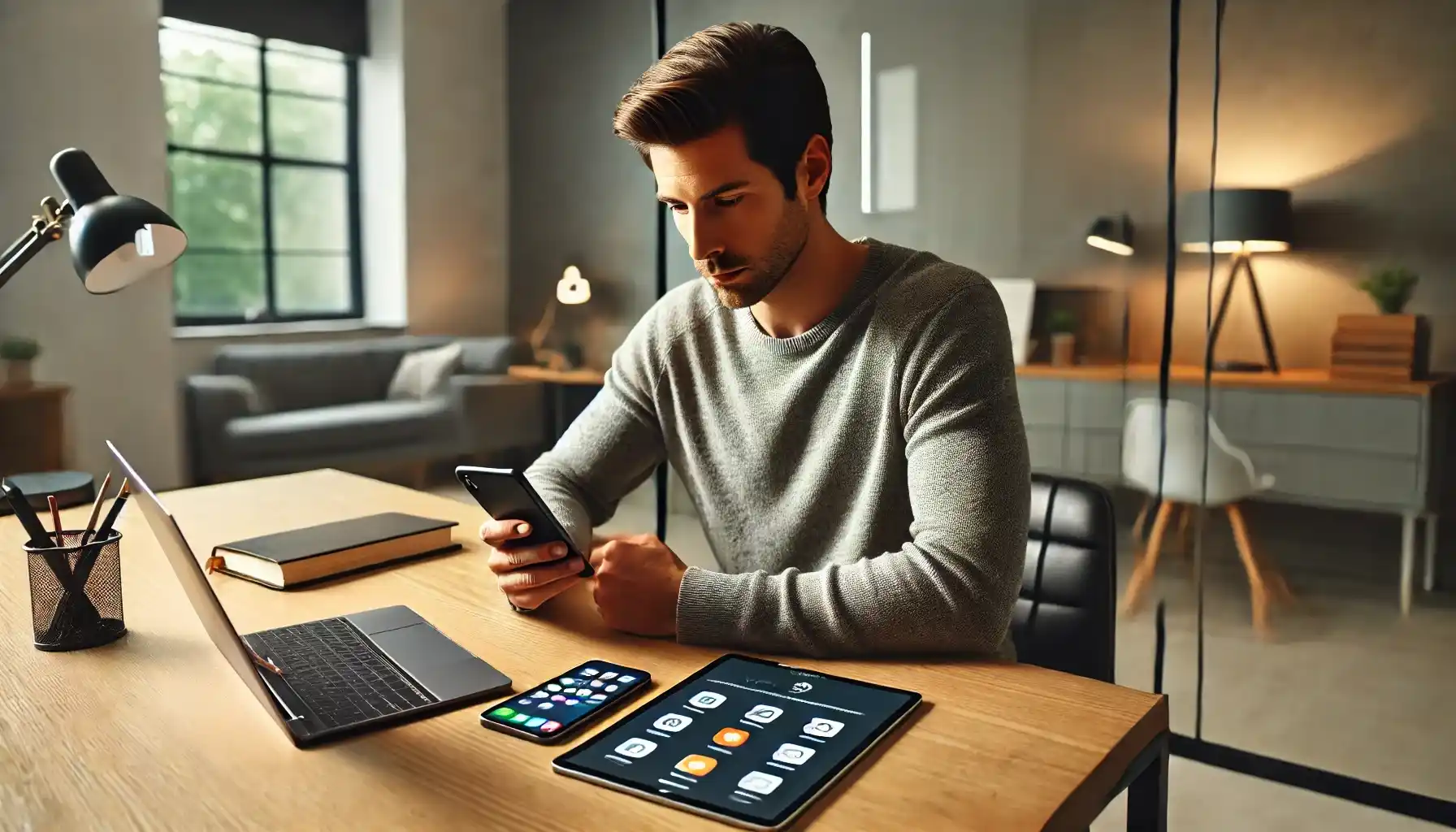The modern world offers us a solution to almost any task in just a couple of clicks. Let’s say you want to know the American Eagle gold coin value – just open the Coin ID Scanner application, snap the coin, and get all the necessary information. Convenient, fast and – most importantly – secure. The app does not require constant access to geolocation and does not collect unnecessary personal data, it offers maximum functionality with minimal interference with privacy.
But can you be sure that other apps on your smartphone are just as ethical? That they aren’t tracking your location in the background, collecting data about your actions and passing it on to third parties? Our phones know a lot more about us than we realize.
So today we are going to have an honest conversation about how to check what data apps are collecting, how to limit your privacy, and how to protect your digital privacy without sacrificing convenience.
Step 1: Check Which Apps Track Your Location
Your phone’s GPS might feel like a helpful feature, but in the wrong hands, it is a breadcrumb trail of your life. Think about it: you check the weather, order takeout, hail a ride – and behind the scenes, dozens of apps could be recording exactly where you are. Thus, a 2022 study by the Norwegian Consumer Council revealed that more than half of popular apps shared precise location data with third-party advertisers.
To check you GPS, start with a quick dive into your location settings:
- On iPhone: Settings > Privacy and Security > Location Services
- On Android: Settings > Location > App permissions
The next thing you should do is to categorize your apps by how much you trust them. For example, in trusted essentials some maps, ride-hailing, safety tools may be included. Suspicious but common apps are like games, social platforms, camera filters. And flat-out unnecessary options can be flashlight apps or calculators that mysteriously ask for location.
Surprised? You’re not alone. Many users discover that harmless-looking apps are quietly sending location pings to servers across the globe. So, here is a tip: just turn off the “Precise Location” feature where it’s not needed. Both iOS and Android now offer this option, giving apps only a general sense of your location – enough for weather updates, but not enough to track your exact movements.
Also, watch for hidden permissions in apps that may appear benign. A photo filter app doesn’t need to know where you are sitting. And yet, some do. If you have some doubts, be sure to disable the access and see if the app still functions – chances are, it will.

Step 2: Take Control Over App Permissions
If location tracking is the headline act, the supporting cast – camera, mic, files, Bluetooth – is quietly collecting data backstage. You’d be surprised how many apps request microphone access without ever needing to “hear” anything. Why does a wallpaper app want your audio input? It shouldn’t.
The best defense for you is to make a monthly habit of reviewing your app permissions:
- On Android: Settings > Privacy > Permission Manager
- On iOS: Settings > Privacy and Security, then dig into Camera, Microphone, Files, and more.
And instead of toggling blindly, ask yourself: would I hand this access to a stranger? One especially sneaky tool is Bluetooth-based tracking. Even with GPS off, Bluetooth can quietly reveal your presence to retailers, stadium beacons, or shopping mall trackers. They know where you’ve been – without your consent.
Lifehack: Disable Bluetooth when you are not actively using it. That quick toggle might just prevent hundreds of passive data exchanges per day.
Another trick is post-update permission creep. Some apps regain lost privileges after an update. Thus, always check your permissions after a major app update – what was private yesterday may be exposed today.
Step 3: Disable Hidden Location Services
You may think you’ve stopped all tracking by adjusting app permissions, but your phone itself is likely still gathering data. Both Apple and Google continue to collect location info even when GPS is turned off.
Background services like Significant Locations on iOS or Web and App Activity on Android can track your routine in every detail, all in the name of “personalization” but at your expense.
To limit this:
- On iOS: Go to Settings > Privacy and Security > Location Services > System Services and turn off Significant Locations.
- On Android: Navigate to Settings > Google > Manage your Google Account > Data and Privacy > Location History and pause it.
- Turn off ad personalization in Google and Meta settings to avoid being targeted based on your movements.
Did you know that even minor data (like when you open an app or connect to Wi-Fi)can be used to triangulate your location? This technique, called location inference, is used by ad networks and analytics firms to create detailed profiles.
Fun fact: Some trackers even use motion sensors to guess if you’re walking or driving – no GPS needed. So, due to disabling these hidden services, you can regain more control over your privacy without sacrificing the functionality of your device.
Step 4: Clean Up Unused Apps and Hidden Logs
We all have that one app on our phone that seemed like a great idea – until it never got used again. Maybe it is a calorie tracker you abandoned after your New Year’s resolution faded, or an old shopping app that you only opened once. But here’s the thing: those unused apps might still be collecting data in the background, silently contributing to your digital footprint.
So, what’s the first step? Declutter your phone not just for freeing up space, but to reduce the amount of data your device is gathering. Start by removing apps that you don’t use regularly. Next, clear your location history. Both Google and Apple track and store your movements, even if you’re not using a location-based app. Refer to the table below to see some tips to follow.
| Action | Where to find it (iOS) | Where to find it (Android) |
| Clear Location History | Settings > Privacy > Location Services > System Services | Settings > Location > Google Location History |
| Remove Unused Apps | Hold the app icon > Remove App | Settings > Apps > Uninstall or Disable |
| Clear Cached Data | Settings > Safari > Clear History and Website Data | Settings > Storage > Clear Cache |

Step 5: Watch Your Activity Trails in Web and Social Apps
Even when you’re not actively being tracked, your web and social activity still paints a detailed picture of who you are. Every search, website visit, and post you share leaves a trail that companies use to analyze your behavior and build a profile of you.
For instance, Google tracks both your search history but also your YouTube activity. So, even if you are watching a random video, Google builds a profile based on your interests. Similarly, platforms like Facebook and Instagram track your interactions, which they use for targeted ads and content recommendations.
To protect your privacy, set up auto-deletion on your accounts. For example, Google lets you automatically delete search history and web activity after 3, 18, or 36 months. Facebook also allows you to clear your activity log to remove traces of your digital journey.
Here is how to clean up your digital footprint:
- Google: Settings > Data and Privacy > Web & App Activity > Choose Auto-Delete Period
- Facebook: Settings > Activity Log > Clear Activity
- Instagram: Settings > Security > Activity Log > Delete
Tip: Regularly review your activity on social apps and delete any unnecessary or sensitive posts. Even if you delete them, they may still be stored in the app’s backend.
Finally, metadata can give away a lot: some hidden data embedded in photos and videos can reveal the time, location, and device used. Thus, be cautious when sharing content, as even harmless-looking pictures may disclose more than you intended.
Small Steps – Better Security
Smartphones help us in our daily activities, but they can also collect information about us without our knowledge. But fear not – protecting our privacy is easy, just set up permissions, delete unnecessary apps, and keep an eye on the data we leave online. These small steps can help you feel safe without giving up your convenience.